Software development is not an easy task. It requires careful planning, execution, and teamwork to deliver high-quality products to end users. The software development life cycle (SDLC) simplifies this process by breaking it into several stages like planning, designing, development, testing, deployment, and maintenance
However, as project complexity grows, managing these stages manually becomes a challenge. To address this, SDLC tools have become essential for modern development teams. This article will discuss the top 10 SDLC Tools for 2025 to help streamline your development workflow.
What are software development life cycle tools?
Simply put, software development life cycle tools are applications used to assist development teams in the various processes and stages of the SDLC. They largely focus on enhancing processes, team cooperation, and quality software production in an optimal period.
Here is how SDLC tools help every stage of the SDLC.
- Planning & Designing: Helps define requirements, set timelines, and allocate resources effectively (Jira, Draw.io).
- Development: Code editors and version control systems simplify coding and manage code changes (VS Code, Github, Gitlab).
- Testing: Helps identify bugs and ensure the software meets quality standards (Selenium, JUnit).
- Deployment: CI/CD tools automate builds, testing, and deployment processes (Jenkins, Github Actions, GitLab CI).
- Maintenance: Ensures stable performance and help quickly identify production bugs ( New Relic, Datadog).
Top 10 software development life cycle tools for 2025
1. Jira
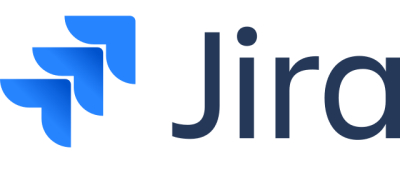
Jira by Atlassian is a powerful SDLC management tool designed for Agile teams. It has become the first choice for task tracking and managing software development projects and is used by more than 180,000 companies worldwide.
Key Features:
- Customizable workflows: You can create workflows to match your team’s development process.
- Advanced reporting: Offers real-time reports like burndown charts and sprint reports to track progress.
- Roadmaps: Visualize project milestones and team dependencies.
- Seamless integrations: Easily connect with tools like Bitbucket, GitHub, and CI/CD pipelines.
Best For: Managing Agile or Scrum workflows for software development projects.
Pricing: Offers 4 pricing plans: Free, Standard, Premium, and Enterprise. Prices are based on the number of developers in your team.
2. Draw.io

Draw.io is a free, open-source tool widely used for creating flowcharts, system architecture diagrams, and process workflows. It can be easily integrated with tools like Google Drive, Microsoft OneDrive, and GitHub, making it ideal for collaboration.
Key Features:
- Easy to use: Drag and drop functionality to create detailed diagrams with minimal effort.
- Wide range of templates: Access pre-built templates for UML diagrams, flowcharts, and network diagrams.
- Version control: Track changes and manage diagram versions seamlessly.
- Offline support: Use the desktop version or browser offline mode to create diagrams without an internet connection.
Best For: Creating visual diagrams for system design, workflows, and architecture documentation.
Pricing: Free and open-source.
3. GitHub
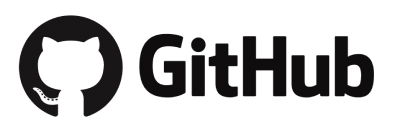
GitHub is the world’s largest platform for source code management. It simplifies version control and improves team collaboration while offering advanced DevOps capabilities.
Key Features:
- GitHub Actions: Automate CI/CD pipelines directly within GitHub, facilitating builds, tests, and deployments.
- Advanced code review: Supports inline code comments, protected branches, and pull request approvals.
- Security vulnerability alerts: Detects and notifies vulnerabilities in dependencies using Dependabot and CodeQL.
- Project Boards: Track project progress with Kanban boards integrated into the repository.
- Codespaces: Provides cloud-based development environments for writing, testing, and debugging code in the browser.
Best For: Collaborative coding, version control, and automated workflows.
Pricing: Free for public repositories. Paid plans start at $4 per user/month.
4. Visual Studio Code
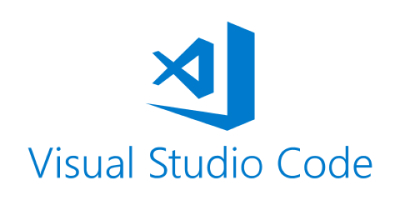
Visual Studio Code is one of the most popular IDEs among developers. It is lightweight and supports a wide range of programming languages with an extensive extension library.
Key Features:
- IntelliSense: Advanced code completion, syntax highlighting, and snippets.
- Built-in Git support: Allows source control management directly from the editor.
- Extensions marketplace: Has a marketplace with thousands of extensions for additional functionality.
- Live share: Developers from remote locations can collaborate in real time by sharing coding sessions.
Best For: Efficient code editing and collaboration across programming languages.
Pricing: Free and open-source.
5. Qodo
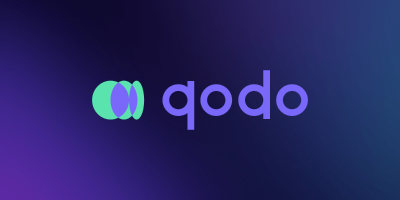
Qodo, formerly known as Codium, is an AI-powered coding assistant designed to enhance developer experience and productivity. It allows developers to write, test, and review code directly within their IDE and Git.
Key Features:
- Precise code suggestions: Qodo deeply analyzes your codebase to provide tailored suggestions, such as adding docstrings, refining exception handling, and implementing best practices to improve code quality.
- Code explanation: Offers detailed descriptions of code snippets and components, breaking them down with usage insights and sample scenarios to boost comprehension.
- Automated test generation: Automatically generates accurate and reliable unit tests, ensuring thorough testing without manual intervention, even for large and complex codebases.
- Code behavior coverage: Enhances testing by generating test cases that cover various code behaviors, seamlessly integrating changes into the source code.
- Streamlined collaboration: Integrates with Git platforms to enable efficient code sharing, reviewing, and collaboration among team members.
- Multi-language and IDE support: Supports Python, JavaScript, TypeScript, VSCode, IntelliJ IDEA, WebStorm, and PyCharm.
Best For: Improving code quality and improving developer experience with AI assistance.
Pricing: The Developer plan is free. The Teams plan is $19 per user/month. Enterprise plans are custom-priced.
6. Selenium

Selenium is an open-source framework for automating web browser testing. With its flexibility, Selenium has become the go-to choice for automating repetitive test cases across different browsers and platforms.
Key Features:
- Cross-browser testing: Supports testing applications on Chrome, Firefox, Safari, and Edge.
- Parallel execution: Selenium Grid allows multiple tests to run simultaneously.
- Language flexibility: Write test scripts in languages such as Python, Java, or C#.
- Integration: Seamlessly integrates with testing tools like TestNG and frameworks like Jenkins.
Best For: Automating web application testing across multiple platforms.
Pricing: Free and open-source.
7. JUnit

JUnit is one of the most popular unit testing frameworks for Java developers. It supports test-driven development (TDD) and allows developers to easily write repeatable and automated tests.
Key Features:
- Annotations for test cases: Simplifies writing tests with annotations like @Test, @Before, @After, and @ParameterizedTest.
- Assertions library: Built-in assertions like assertEquals and assertThrows to validate expected outcomes easily.
- Parameterized tests: Execute the same test logic with multiple input values, improving test coverage.
- Integrations: Works seamlessly with CI/CD tools like Jenkins and IDEs like IntelliJ and Eclipse.
- Test execution reports: Generate clear test reports to identify failures and debugging needs.
Best For: Unit testing in Java applications.
Pricing: Free and open-source.
8. Jenkins

Jenkins is an open-source SDLC automation tool that has over 1 million users worldwide. Jenkins simplifies the CI/CD process by helping teams automate builds, testing, and deployment processes.
Key Features:
- Pipeline as code: Define complex CI/CD workflows using declarative or scripted Jenkinsfiles.
- Extensive plugin ecosystem: Integrates with GitHub, Docker, Kubernetes, and hundreds of other tools to create end-to-end pipelines.
- Real-time monitoring: Track build status, logs, and failures with detailed visual dashboards.
- Customizable notifications: Set up alerts via email, Slack, or other messaging systems for quick feedback.
Pricing: Free and open-source.
9. New Relic

New Relic is an observability platform that helps developers monitor and optimize application performance in real time. It works seamlessly with tools like AWS, Azure, Docker, and Kubernetes, providing end-to-end visibility into software systems.
Key Features:
- Full stack observability: Provides a single view to monitor infrastructure, applications, logs, and user behavior.
- Distributed tracing: Helps identify bottlenecks across microservices through traces.
- Real-time alerts: AI-powered anomaly detection sends alerts for critical issues.
- APM: Provides detailed information on response times, error rates, and slow transactions for improved performance.
Best For: Real-time performance monitoring and optimization.
Pricing: Free for 100 GB/month. Contact customer care for detailed pricing.
10. Snyk
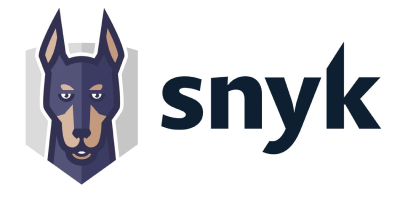
Snyk is a developer-centric security platform that helps identify and remediate vulnerabilities in code, dependencies, containers, and infrastructure as code. It integrates seamlessly into the development process and is used by companies like Google and Salesforce.
Key Features:
- Automated vulnerability detection: Continuously scans for vulnerabilities in open-source dependencies and container images.
- Real-time fix suggestions: Provides actionable remediation advice, including automated pull requests for necessary fixes.
- License compliance management: Manages open-source licenses to ensure compliance and reduce legal risks.
- CI/CD integration: Integrates with popular CI/CD pipelines like Bitbucket.
Best For: Ensuring security and compliance throughout the development lifecycle.
Pricing: Offers a free tier with limited features. Paid plans start at $23 per contributing developer per month.
Benefits of using SDLC tools
The use of SDLC tools can considerably improve the software development processes. Here are the key benefits:
- Improved collaboration: Shared dashboards, real-time updates, and integrated task management help everyone in the team to stay focused.
- Automation of repetitive tasks: Reduces manual effort, boosts workflows, and minimizes the risk of human error.
- Enhanced code quality and testing: Helps detect bugs early, improving overall software quality and stability.
- Better project tracking and visibility: Enables managers to see the work that has been done, know where the challenges are, and make decisions based on evidence.
- Scalability and integration: Integrate easily with other platforms (e.g., GitHub Actions for CI/CD), making it easier to scale processes as projects grow.
Challenges of implementing SDLC tools
While SDLC software offers numerous benefits, teams may face challenges during implementation:
- Learning curve: Adopting new tools often requires training. This can temporarily impact productivity.
- Integration issues: Not all tools integrate seamlessly with existing workflows or other systems. Ensuring compatibility between tools can require additional effort and resources.
- Cost and resource allocation: Some tools come with significant costs for enterprise features., which can be difficult to bear for small organizations.
Conclusion
SDLC software is essential for modern software development. It helps development teams work more efficiently, improve collaboration, and deliver high-quality software. This article discussed 10 SDLC tools that will be handy for your next project, covering all the stages of SDLC. However, you need to carefully consider project requirements, tool features, financial feasibility, and learning curve before making a decision.

